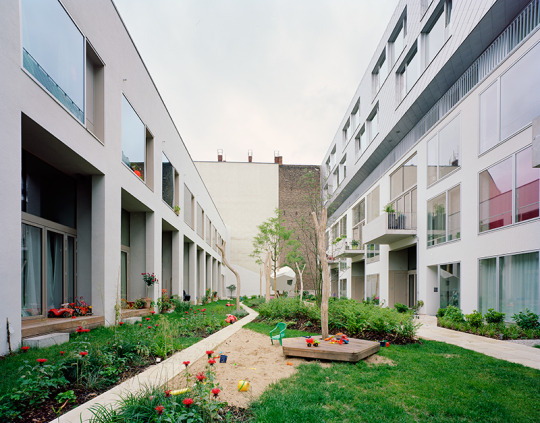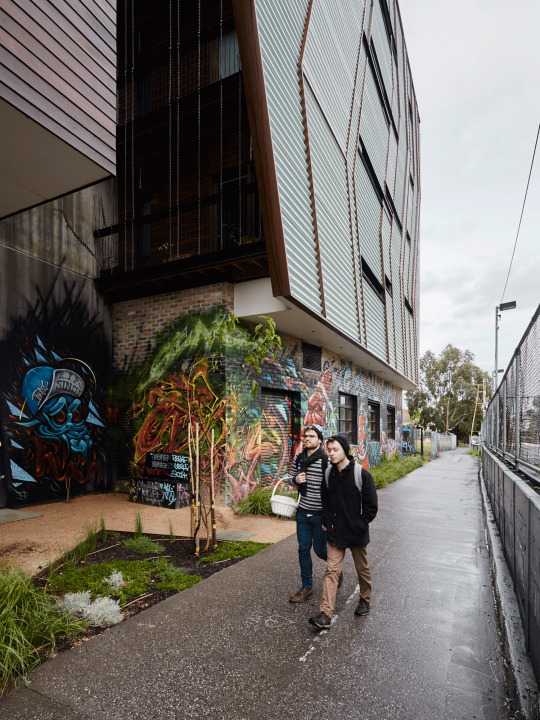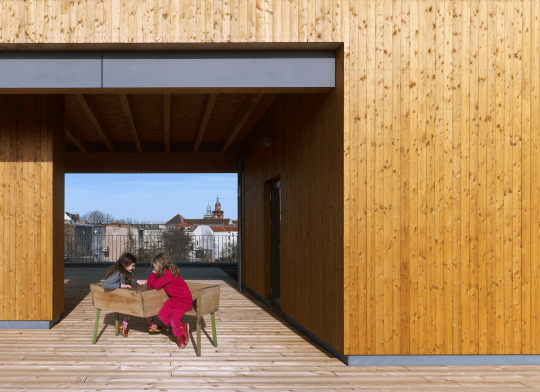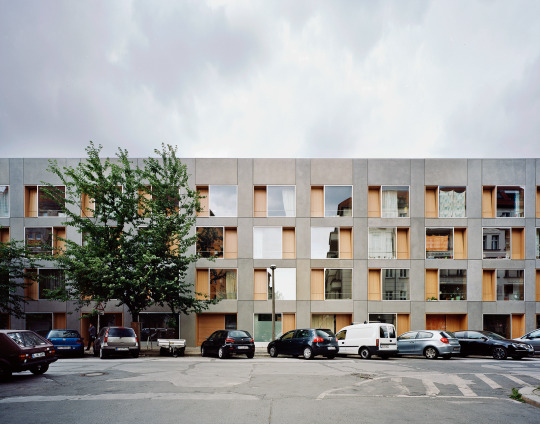#Katherine Sundermann
Photo






ON OUR WEBSITE
As good quality inner-city housing becomes increasingly out of reach for many Australians, Katherine Sundermann considers Berlin-based alternative housing models and what Melbournians could learn from the German capital, where many residents have taken it upon themselves to lead their own housing developments.
Dubbed ‘deliberative development’ by Dr Andrea Sharam of Swinburne University, these types of developments have grown in status and number as the positives become clear to aspiring homeowners. “There are obvious benefits: residents are able to act as their own agents of change, resulting in greater variety, higher quality and a more affordable range of apartments that contribute to the broader fabric of the city,” explains Sundermann.
The Nightingale Model is one such high profile example of deliberate development. Led by Breathe Architecture’s founder Jeremy McLeod, the Nightingale Model has seen a number of local architecture practices join forces to self-fund inner city housing developments. Potential residents are consulted early in the planning process to determine demand for features, and prices are kept low by avoiding the usual fair of display suits, marketing teams, and potentially unwanted inclusions such as car spaces. The Nightingale Model can be compared to Berlin-based ‘Baugruppen’ (’building groups’), which were popularised during the 1990s and led to numerous innovative projects such as 3XGRÜN (by Atelier PK, Roedig Schop and Rozynski Sturm) and Zanderroth Architekten’s BIGyard. Says Sundermann: “In allowing residents to become agents of change in their neighbourhoods – leading development instead of just opposing it – more housing could potentially be provided in areas where people would prefer to live.”
Photos by Simon Menges, Michael Feser & James Geer.
#Housing#Berlin#Melbourne#Nightingale#Baugruppen#Katherine Sundermann#Blueprint City#Breathe Architecture#Zanderroth Architekten#Atelier PK#Roedig Schop#Rozynski Sturm#Deliberative Development
2 notes
·
View notes
Text
Miscarriage Risk Goes Up Each Week Alcohol is Used in Early Pregnancy
Each week a woman drinks any amount or type of alcohol during the first five to 10 weeks of pregnancy is linked to an incremental 8% increase in risk of miscarriage, according to a new study published in the American Journal of Obstetrics and Gynecology.
For the study, researchers at Vanderbilt University Medical Center (VUMC) examined the timing, amount and type of alcohol used during pregnancy and how these factors are linked to miscarriage risk before 20 weeks’ gestation.
The effects of alcohol use increases through the ninth week of pregnancy, and risk accrues regardless of whether a woman reported having fewer than one drink or more than four drinks each week. Risk was also found to be independent of the type of alcohol consumed and whether the woman had episodes of binge drinking.
While most women change their alcohol use after a positive pregnancy test, consuming alcohol before knowing they are pregnant is common among both those with a planned or unintended pregnancy. Half of the 5,353 women included in the analysis reported alcohol use around conception and during the first weeks of pregnancy.
The median gestational age for quitting alcohol was 29 days. Although 41% of women who changed their use did so within three days of a positive pregnancy test, those who stopped consumption near their missed period had a 37% greater risk of miscarriage compared to women who did not use alcohol.
“Abstaining from alcohol around conception or during pregnancy has long been advised for many reasons, including preventing fetal alcohol syndrome. Nonetheless, modest levels of consumption are often seen as likely to be safe,” said Katherine Hartmann, M.D., Ph.D., vice president for Research Integration at VUMC and principal investigator for the Right from the Start cohort, from which participants were enrolled in the study.
“For this reason, our findings are alarming. Levels of use that women, and some care providers, may believe are responsible are harmful, and no amount can be suggested as safe regarding pregnancy loss.”
One in six known pregnancies ends in miscarriage, which brings great emotional cost and leaves unanswered questions about why the miscarriage occurred, according to the researchers.
Biologically, it is still unclear how alcohol causes harm during early pregnancy, but it may increase miscarriage risk by changing hormone patterns, altering the quality of implantation, increasing oxidative stress or impairing key pathways.
Since alcohol use is most common during the first weeks — when the embryo develops most rapidly and lays down the pattern for organ development — understanding how timing relates to risk matters.
Risk did not peak in patterns related to alcohol use in specific phases of embryonic development, and there was no evidence that a cumulative “dose” of alcohol contributed to level of risk.
The research involved women planning a pregnancy or in early pregnancy from eight metropolitan areas in Tennessee, North Carolina and Texas. Participants were interviewed during the first trimester about their alcohol use in a four-month window.
“Combining the facts that the cohort is large, comes from diverse communities, captures data early in pregnancy and applies more advanced analytic techniques than prior studies, we’re confident we’ve raised important concerns,” said Alex Sundermann, M.D., Ph.D., the study’s first author and recent graduate of the Vanderbilt Medical Scientist Training Program.
To reduce the risk of miscarriage, the researchers emphasize the importance of using home pregnancy tests, which can reliably detect pregnancy before a missed period, and quitting alcohol use when planning a pregnancy or when pregnancy is possible.
Source: Vanderbilt University Medical Center
from Psych Central News https://ift.tt/2PMQuRe
via IFTTT
0 notes
Text
Dự báo thị trường bất động sản Úc trong thập kỷ tới
Dự báo thị trường bất động sản Úc trong thập kỷ tới
Theo một số báo cáo của các chuyên gia dự đoán rằng thị trường bất động sản Úc trong thập kỷ tới sẽ có một số tiến triển tốt.
Thị trường bất động sản Úc luôn có một sức hút với nhà đầu tư trên thế giới. Đặc biệt trong thập kỷ tới có một lượng dân nhập cư mới sẽ thúc đẩy thị trường tại một số khu vực nhất định. Dưới đây là đánh giá của các chuyên gia về nghiên cứu nhu cầu và thực trạng nhà ở hiện tại ở Úc.
Theo số liệu của Cục Thống kê Úc (ABS), thế hệ nằm trong độ tuổi từ 35 – 39 cũng có khuynh hướng sinh sống trong những căn nhà nằm san sát nhau. Tại Sydney 53% các hộ gia đình nằm trong độ tuổi từ 35 đến 39 sống căn townhouse diện tích đất không quá rộng và gần trung tâm.
Ở các thế hệ trước, người Úc có xu hướng đến các vùng ngoại ô xa hơn để tìm mua một căn nhà dành cho gia đình. Nhưng hiện nay, mọi người đang chia sẻ không gian sống để được ở trong những căn nhà có vị trí thuận tiện với họ.
Bên cạnh đó, Giám đốc điều hành tổ chức Urban Taskforce Australia, ông Chris Johnson phát biểu: “Sydney là nơi dẫn đầu cả nước về việc chuyển sang cuộc sống của các gia đình sống chung nhiều thế hệ. Hồi năm 1991, chỉ có 14% các gia đình sống chung nhiều thế hệ, nhưng đến năm 2016 thì con số này đã tăng lên đến 20%. Chúng tôi dự đoán rằng con số này sẽ tiếp tục tăng lên mức 24% vào năm 2024”.
Mặt khác, Phó Giám đốc điều hành công ty kiến trúc MGS Architects, Tiến sĩ Katherine Sundermann, cho rằng các nhà thầu nên bắt đầu xây dựng những căn hộ và những căn townhouse phù hợp cho cả gia đình sinh sống, nên chú trọng diện tích xây dựng lớn để đủ cho nhiều thế hệ sinh sống.
Như vậy theo đánh giá của các chuyên gia ngày càng có nhiều người sẵn sàng đưa con cái chuyển đến sinh sống trong các căn townhouse ở khu vực nội ô của các thành phố lớn. Việc này sẽ thúc đẩy phát triển thị trường bất động sản nhà phố tại một số vị trí gần trung tâm trong nhiều năm tới.
https://tinuc.net/bat-dong-san-uc/du-bao-thi-truong-bat-dong-san-uc-trong-thap-ky-toi.html
0 notes